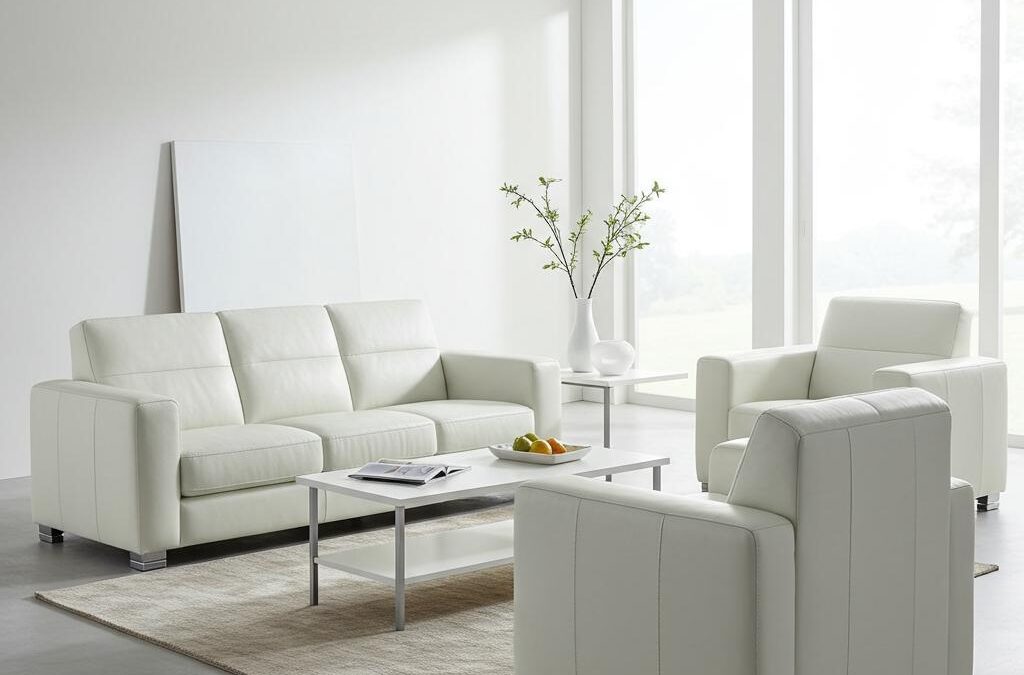Keeping your furniture looking pristine isn’t just about maintaining appearances—it’s also essential for a clean, healthy, and comfortable home. Whether it’s your sofa, armchair, or dining room chairs, furniture endures daily use, spills, pet mishaps, and the buildup of dust and allergens. Over time, this can affect both the look and feel of your living space. But how do you know when it’s time to give your furniture a thorough cleaning? Recognizing the signs early can save you from embarrassment, extend the life of your pieces, and contribute to a healthier environment for you and your family.
Imagine inviting friends over and spotting that stubborn coffee stain on your couch that’s been ignored for weeks. Awkward, right? By knowing when furniture needs attention, you can prevent these situations, maintain comfort, and ensure your home always feels inviting. Here are some key signs that it’s time to schedule a professional furniture cleaning or take matters into your own hands.
Visible Stains or Discolouration
The most obvious indication that your furniture needs cleaning is visible stains or fading. Whether it’s a small wine spill, a smudge from your pet’s paw, or discoloration caused by prolonged sun exposure, ignoring these marks allows them to set into the fabric and become harder to remove.
Common Causes of Stains:
Food and Drink: Snacks, coffee, wine, or sauces can easily find their way onto upholstery. Even a small spill can become embedded in the fibres if left untreated. Over time, these stains can darken or yellow, creating permanent blemishes.
Pets: Our furry companions bring joy and companionship, but they also bring mess. Muddy paws, hair, and occasional accidents can leave marks on your furniture. Without prompt cleaning, these stains can become tough to remove and may affect both appearance and smell.
Daily Dirt and Dust: Even without spills or pets, dust accumulates naturally over time. Sitting, leaning, or resting objects on your furniture can grind dirt into the fabric, dulling its color and texture.
Addressing stains early not only keeps your furniture looking fresh but also prevents damage. Regular cleaning can revive fabric colors, restore a soft texture, and prevent permanent wear, ensuring your furniture stays beautiful for years.
Lingering Odours
Sometimes, you don’t notice the mess until you smell it. Lingering odors are a subtle but telling sign that your furniture could benefit from a deep clean. Sofas, recliners, and fabric chairs act like sponges, absorbing everything from cooking aromas to smoke, body odors, and pet smells. Even with frequent room ventilation, these scents can persist.
Sources of Unpleasant Odours:
Pets: Beyond visible dirt, pets bring scents that can become trapped in upholstery. Over time, these smells intensify, especially in fabric that isn’t regularly cleaned.
Spills and Accidents: Liquids that aren’t thoroughly cleaned can leave behind mildew or a sour smell.
Environmental Factors: Smoke, cooking odors, and even dampness from humid climates can contribute to persistent odors.
A professional cleaning not only removes visible stains but also targets the hidden smells that make your home feel less fresh. By refreshing your furniture, you create a more inviting atmosphere for both family and guests.
Allergy Symptoms
If you’ve noticed more sneezing, coughing, or congestion, your furniture could be partially to blame. Dust mites, pet dander, and other allergens love to settle in fabric crevices, particularly in couches, armchairs, and upholstered beds. When disturbed by sitting or moving, these allergens can re-enter the air, aggravating symptoms for sensitive individuals.
Common Allergens Found in Furniture:
Dust Mites: Microscopic creatures that thrive in warm, humid environments. They feed on dead skin cells and can trigger sneezing, watery eyes, and asthma symptoms.
Pet Dander: Tiny flakes of skin shed by furry pets can become trapped in fabric, leading to allergic reactions in sensitive individuals.
Mould and Mildew: Hidden moisture in upholstery can lead to mold growth, which contributes to respiratory problems and musty odors.
Regular furniture cleaning can drastically reduce allergen levels. Professional treatments often use specialized equipment to remove dust, dander, and other particles trapped deep within fibers, creating a healthier home environment. For households with allergy sufferers or young children, this step is particularly important.
Noticeable Wear and Tear
Over time, regular use can lead to visible wear on your furniture. While some wear is normal, excessive fraying, thinning, or discolouration may indicate accumulated dirt and grime. Ground-in dirt and oils from skin and hair rub against fibers, accelerating fabric breakdown.
Common Areas of Wear:
Armrests: Frequent contact with hands and arms makes these spots prone to dirt accumulation and fraying.
Seat Cushions: Daily use compresses fibers and may trap debris, leading to a worn appearance.
High-Traffic Areas: Sections that get the most use, such as around the living room or dining chairs, often show early signs of dirt-induced wear.
Professional cleaning not only improves the look of your furniture but also helps preserve its structural integrity. By removing embedded dirt, you prevent further damage and extend the life of your investment.
Changes in Texture or Comfort
Sometimes, the issue isn’t visible or smelly but tactile. If your furniture feels stiff, rough, or uncomfortable, it may be due to soil, dust, or residue buildup. Over time, particles trapped in fibers can change the softness of the upholstery, making it less pleasant to sit on.
Regular maintenance ensures that your furniture not only looks clean but feels clean. A deep clean can restore softness and comfort, giving your living space a fresher, more welcoming feel.
Tips for Maintaining Clean Furniture
While professional cleaning is essential for deep-set dirt and stains, there are several steps you can take at home to prolong the life and appearance of your furniture:
Vacuum Regularly: Use a vacuum with an upholstery attachment to remove dust, crumbs, and pet hair from cushions and crevices.
Spot Clean Spills Immediately: Blot spills with a clean cloth and use a mild cleaner if necessary. Avoid rubbing, which can push stains deeper.
Rotate Cushions: Flip and rotate seat cushions periodically to ensure even wear and reduce fading.
Use Furniture Protectors: Consider using throws, slipcovers, or protective pads to shield high-use areas from spills and dirt.
Limit Sun Exposure: Direct sunlight can fade fabrics and cause uneven wear. Use curtains or reposition furniture to prevent sun damage.
Professional Cleaning Schedule: Aim for professional upholstery cleaning at least once every 12–18 months, or more frequently if you have pets or children.
Benefits of Professional Furniture Cleaning
Hiring experts to clean your furniture goes beyond aesthetics. Professional cleaning methods are designed to remove deeply embedded dirt, allergens, and odors that regular home cleaning cannot address. Here’s what you gain:
Healthier Living Space: Reduction of allergens, dust mites, and bacteria promotes better air quality.
Longer Lifespan for Furniture: Dirt and grime accelerate wear, so removing them helps maintain fabric integrity.
Enhanced Appearance: Colors are refreshed, stains are removed, and fabrics regain their original texture.
Odor Elimination: Deep cleaning neutralizes persistent smells from pets, spills, or smoke.
Peace of Mind: Knowing your furniture is thoroughly clean allows you to host guests and relax comfortably without worry.
When to Call in the Professionals
While you can handle small spills and vacuuming, certain situations call for professional attention:
Persistent Stains: Coffee, wine, or ink that won’t come out with home remedies.
Strong Odors: Lingering smells from pets, smoke, or mildew.
Allergen Concerns: Households with allergy sufferers or small children.
Visible Wear: Areas that appear dull, frayed, or heavily soiled despite regular cleaning.
Professional cleaners have access to specialized equipment and safe cleaning solutions that reach deep into fibers without damaging your upholstery. Their expertise ensures thorough results and helps prolong your furniture’s lifespan.
Conclusion
Your furniture is more than just a place to sit—it’s a part of your home’s comfort, health, and aesthetics. Paying attention to signs such as visible stains, unpleasant odors, allergy symptoms, wear and tear, and changes in texture can help you know when it’s time for a deep clean. By addressing these issues early and incorporating regular professional maintenance, you protect your investment, improve indoor air quality, and create a welcoming environment for your family and guests.
Maintaining clean furniture is not just about appearances; it’s about preserving comfort, health, and longevity. Whether it’s a cherished sofa, a cozy armchair, or elegant dining chairs, keeping them in top shape ensures a home that’s both inviting and hygienic.
Keep your furniture looking and feeling fresh with the trusted services from Chem-Dry of the Kawarthas. Our professional cleaning services effectively remove stains, allergens, and unpleasant odors, creating a healthier and more comfortable living environment. Experience the difference of expert upholstery cleaning and enjoy the peace of mind that comes with a clean, vibrant home. Contact us today and let us handle the dirt while you enjoy a fresher, more welcoming space.





